When people discuss Australian wildlife, the tone of the conversation goes from aw and ARGH very quickly. You’ve probably heard the phrase “everything in Australia is trying to kill you”. Granted, some of our native animals strike fear in even the bravest locals, but there are plenty of safe ways to see these creatures in the wild. These are the best places to see our celebrity animals.
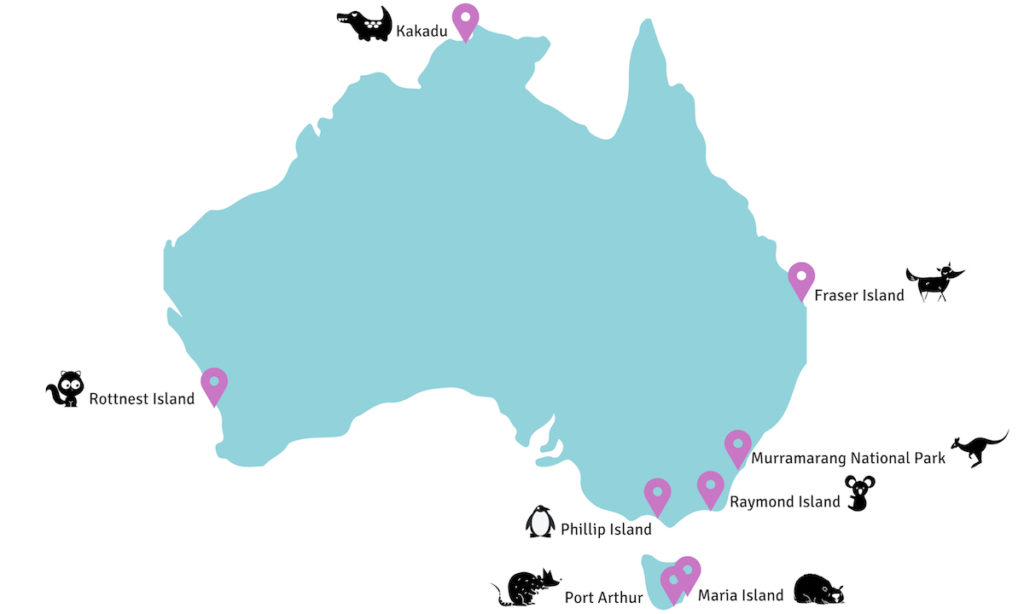
Where to find Australia’s iconic animals. Credit: Family Travel
Quokkas
Rottnest Island, Western Australia
Quokkas have got to be our most photogenic native animal. They’re definitely the happiest, but they’re also one of the most severely threatened. Quokkas are virtually extinct on the mainland and only around 10,000 remain on various islands off the coast of Western Australia.
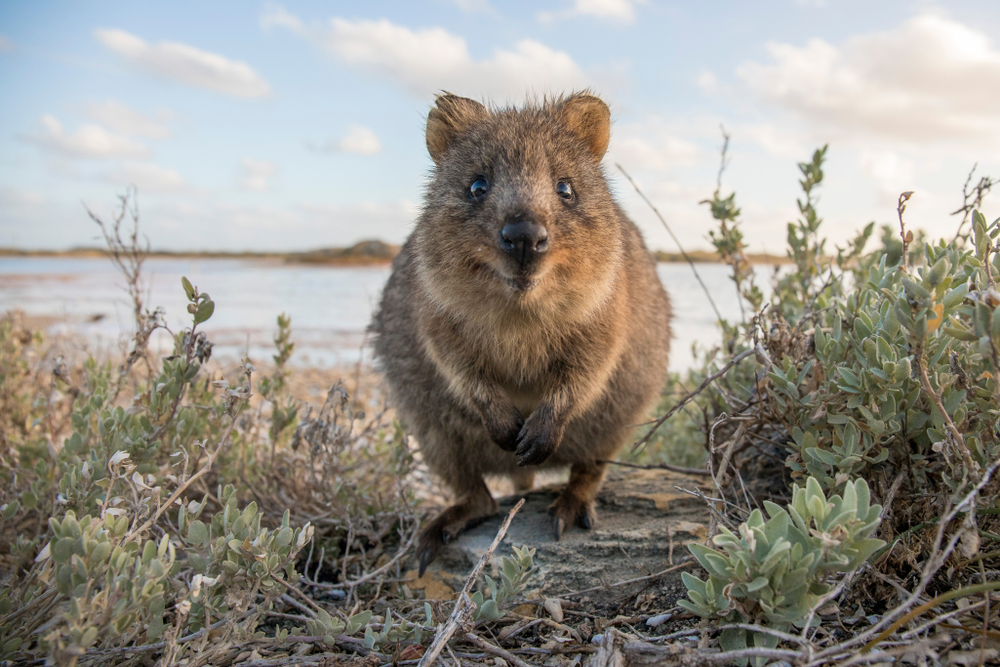
Smiley quokkas on Rottnest Island. Photo: Shutterstock
Quokkas are herbivores who eat mostly leaves, bark and plant stems. However, they can survive for long periods of time off the fat stored in their tails. Another fun fact; if quokkas are threatened, the mother will often throw her joey on the ground as a distraction to save herself from the predator. Savage.
They thrive on a small island called Rottnest, 20 minutes by ferry from Fremantle. Rottnest Island was actually named after the quokkas by the Dutch who mistook them as rats. In actual fact, these marsupials belong to the wallaby family and can grow to about the size of a cat.
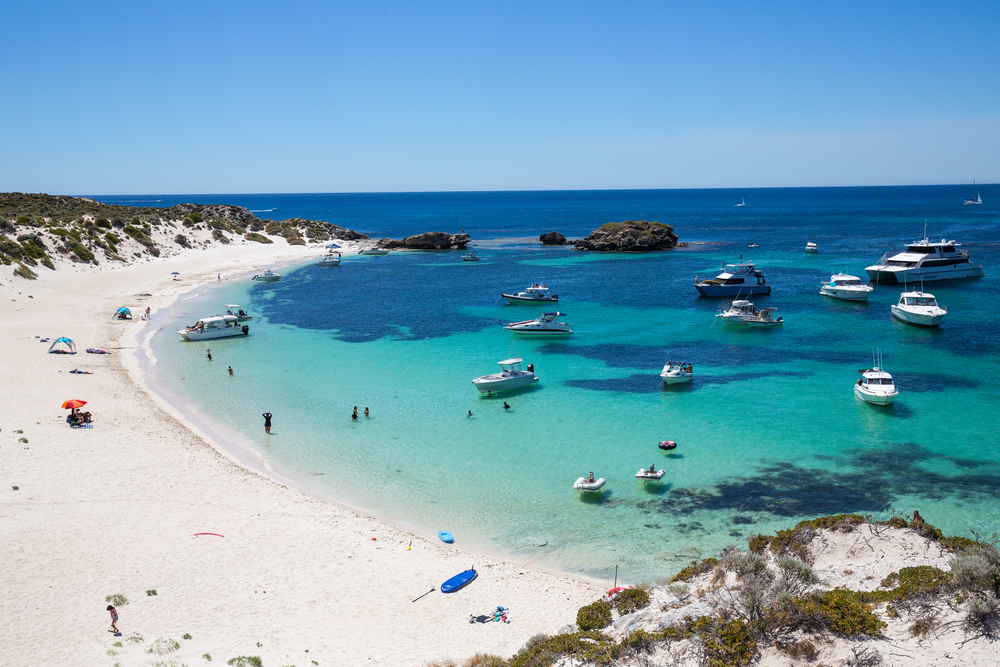
Rottnest has a few beautiful beaches with bright, blue water. Photo: Shutterstock
To get to Rottnest Island, visitors can jump on the ferry at Fremantle, Hillarys Boat Harbour or Perth’s Barrack Street Jetty. Once you arrive on the island, you’ll find quokkas pretty much everywhere. They’re quite comfortable interacting with humans but picking them up and feeding them is not allowed. Once you’ve reached your cuteness-quota, you can check out the beautiful beaches, visit the lighthouse or cycle around the island before. There is a variety of accommodation on Rottnest if you want to stretch out your stay. Read more about Rottnest and a few Aussie islands here.
Little Penguins
Phillip Island, Victoria
The aptly named Little Penguins are the smallest species of penguin in the world, maxing out at around 30cm tall. They spend 80% of their life at sea, searching for food and avoiding their predators; fur seals, sharks and large sea birds. The other 20% is spent nesting burrows to breed, moult and rest after weeks a few at sea.
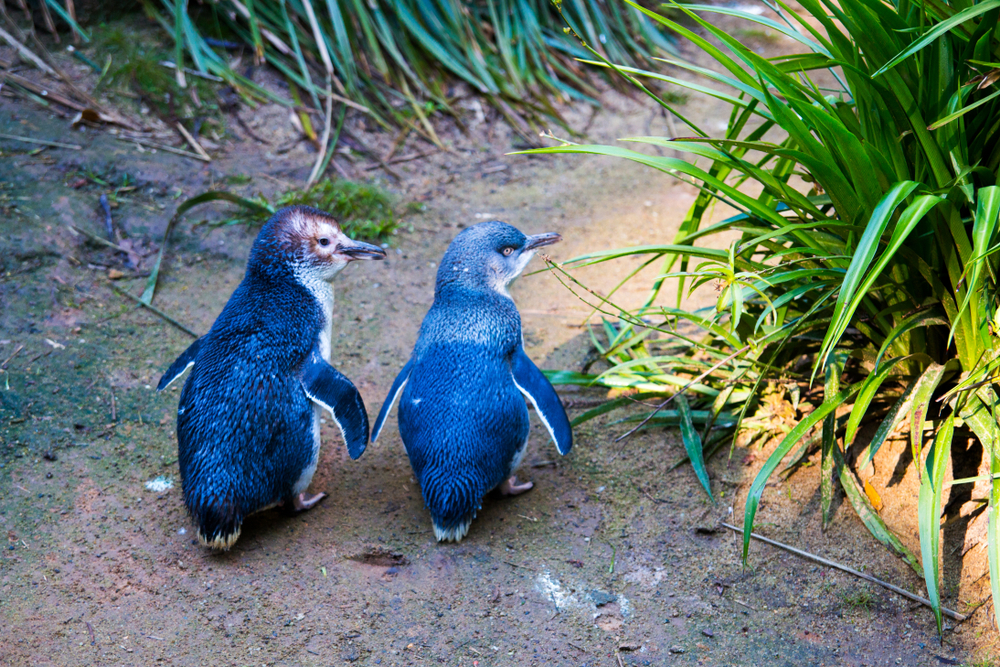
Little penguin pals. Photo: Shutterstock
Marriage troubles? Little Penguins can relate. The divorce rate for penguins is between 18-50%. If breeding success is low with one partner, they’ll move right on to the next. Both parents will take turns incubating the eggs; a process which takes around 35 days. After the chicks reach seven weeks, their instincts kick in and they head straight out to hunt for food. No lessons or youtube tutorials needed.
Phillip Island is home to one of the largest Little Penguin colonies in the world. The best place to see them is at the Penguin Parade in Summerland Bay. Every night, you can watch the Little Penguins returning home at sunset, waddling across the sand toward their burrows. Visitors can join a ranger tour or opt for a self-guided experience from one of the viewing platforms. There’s even an underground bunker that gives you a unique vantage point to witness the penguins coming in to nest.
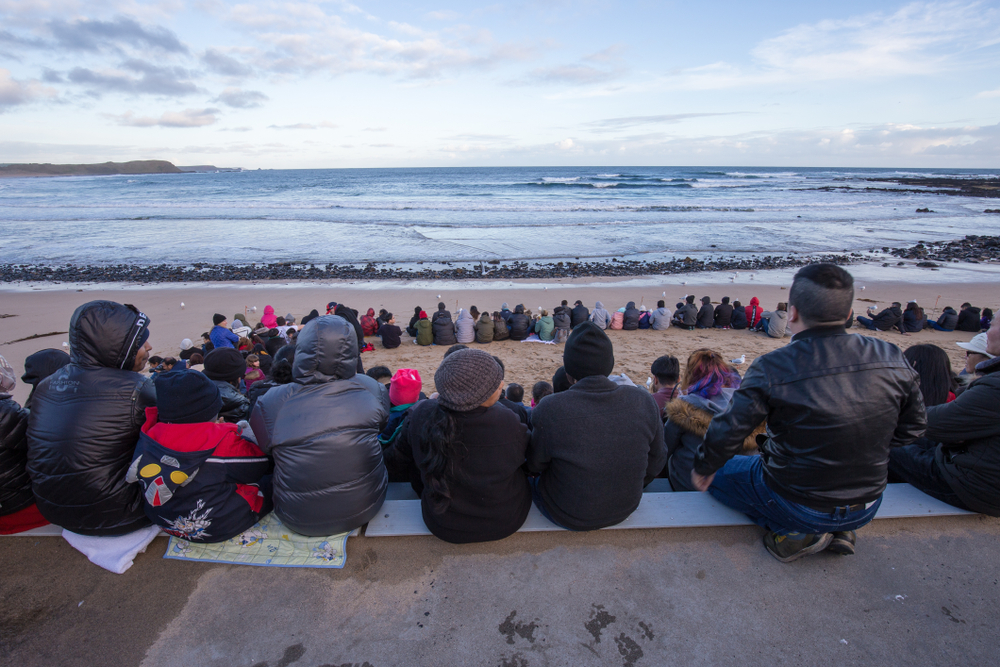
Visitors waiting for the Penguin Parade. Photo: Shutterstock
Car lovers may also know Phillip Island for hosting the Grand Prix and various other motor races throughout the year. Rev heads can jump in a go-kart and take on a mini version of the track. There’s plenty to keep you busy for a few days so it’s worth checking out the family-friendly accommodation on the island. Self-catered apartments offer the most convenience and flexibility but farmstays give you a unique, slower-paced experience.
Phillip Island is around 2 by car hours from Melbourne. Visitors can also reach the island by ferry or on the V/Line coach.
What else can you do on Phillip Island? Find out here.
Kangaroos
Murramarang National Park, New South Wales
We’ve all seen the viral videos of various people getting either kicked or punched by our national animal. Nothing says welcome to Australia like an uppercut from a red kangaroo.
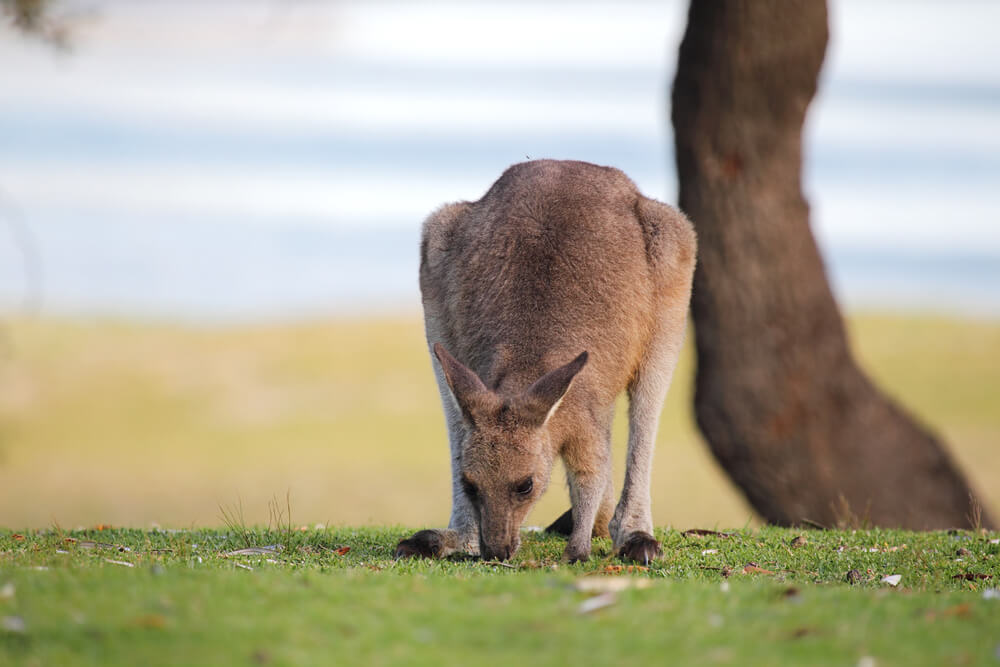
Grey kangaroos often hang out at Pebbly Beach. Photo: Shutterstock
To avoid becoming a victim of the next viral kangaroo attack video, we recommend staying a safe distance from these animals in the wild. They generally keep to themselves but are extremely protective of their babies, and understandably so.
Kangaroos are everywhere, even on the outskirts of cities and suburban areas. They’re particularly fond of golf courses and beaches. One beach in particular is a thoroughfare for these bounding beasts. Tucked away in Murramarang National Park on the New South Wales South Coast, hundreds of kangaroos and their basque in the sun at Pebbly Beach. A large population of resident Eastern Grey Kangaroos call this piece of paradise home. The white sandy beach and thick bushland provide an ideal environment for the roos to raise their joeys. They quite happily share the beach and grassy knolls with humans but prefer not to be approached.
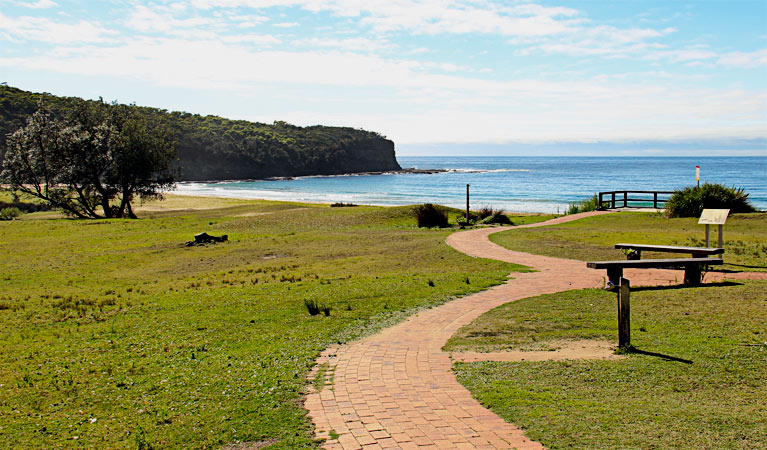
Pebbly Beach on the NSW South Coast. Photo: NSW National Parks & Wildlife Service
Pebbly Beach has a great campground and a few accessible cabins that are well maintained by the rangers from NSW National Parks & Wildlife Service. You can find more information about staying at Pebbly beach here.
Wombats
Maria Island, Tasmania
Australia has three species of wombat but the most common at the bare-nosed wombat. These are called pinkies when they’re babies. Besides being absolutely adorable, wombats have one quirky feature that will make you love them even more. They poo in squares. Seriously. Wombat poo is perfectly cubed. They have developed this techniques over hundreds of years to help them establish their territory.
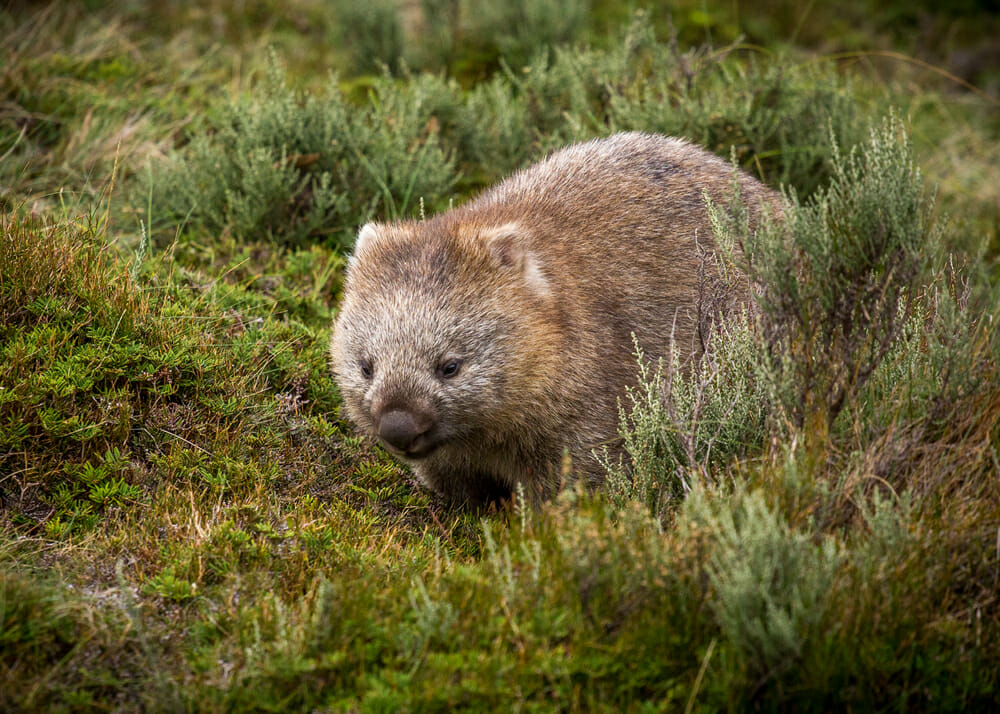
A bare nosed wombat. Photo: Shutterstock
Wombats are chunky little things but damn, they can run! They can reach speeds of up to 40 km/h. For reference, Usain Bolt’s top speed in 45km/h. They’re also insanely strong and can be quite aggressive. For this reason, it’s best not to mess with them in the wild.
Maria Island is a sanctuary and National Park off the east coast of Tasmania. It’s sometimes referred to as “Tasmania’s Noah’s Ark” because it offers a solace to hundreds of threatened species, including our beloved wombats. The wombats on Maria Island have few natural enemies so they are less defensive than those on the mainland.
They have also grown accustomed to the crowds that come to visit. However, the East Coast Tourism board has invited tourists to sign a pledge to not take selfies with the wombats. Why? Well, you know when you get that urge to bundle up your kids and cuddle them to death, but you know this would be horribly embarrassing, especially in a public place? A lot of tourists have been smothering the wombats in a similar way. Going in for a belly rub or a selfie can be quite frightening for these small, rotund creatures.
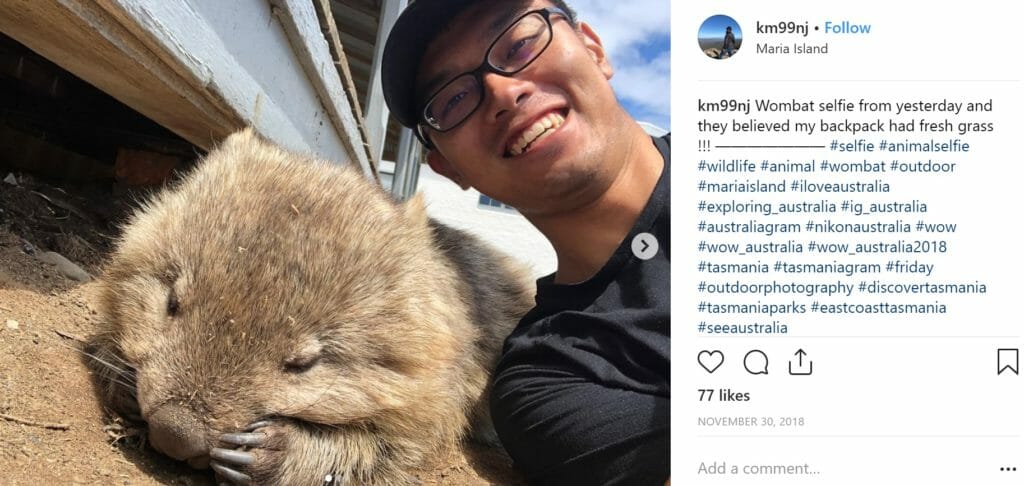
Maria Island wants tourists to stop taking wombat selfies. Picture: Instagram
The pledge is a way to keep wombats safe and wild, rather than domesticating them into instagram-obsessed selfie queens. The pledge also involves not leaving food or rubbish behind, and will be on display at the ferry terminal in English and Mandarin.
Koalas
Raymond Island, Victoria
If you love sleeping and eating constantly, you may have just found your spirit animal. Koalas sleep for up to 20 hours a day and chomp on gum leaves and eucalyptus almost every waking minute. This is more an act of energy preservation than laziness. The more time koalas spend awake, the more energy they burn, and they simply aren’t capable of consuming enough calories to keep them going for longer than a few hours at a time.
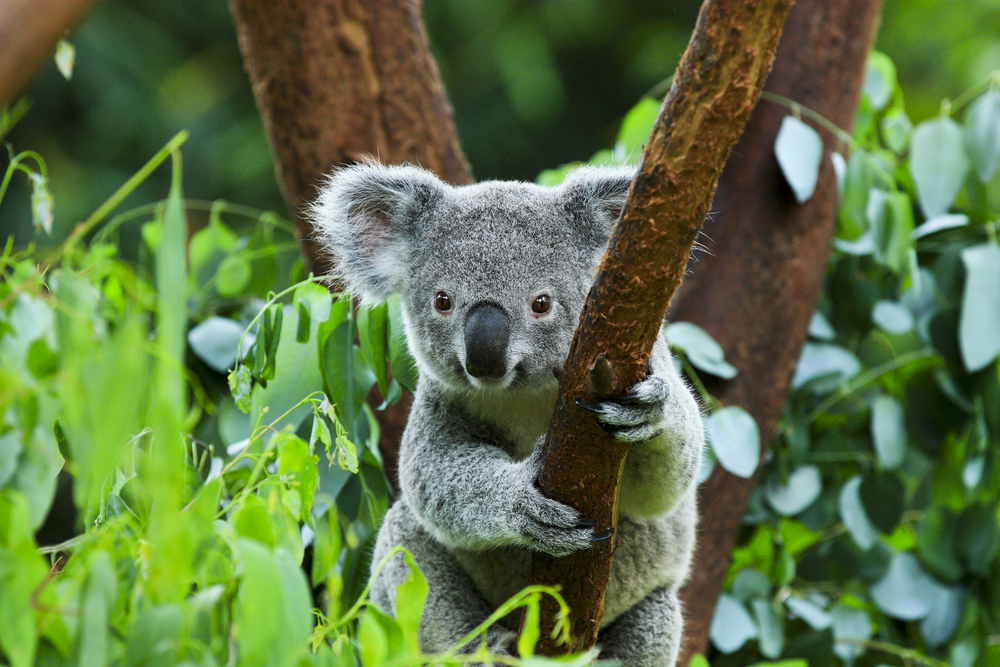
Koalas spend most of their lives sleeping high up in the trees. Photo: Shutterstock
Koalas may look very cuddly, but they are reclusive creatures who aren’t accustomed to coming into contact with humans in the wild. If you’re thinking about going in for a hug, you may end up with some nasty scratches and even a bite or two. Koalas that have grown up in animal sanctuaries may be a little more friendly, but it’s best to admire these fellas from afar.
Koalas can be found in the wild all over the east coast of Australia. Wherever there are gum and eucalyptus trees, you will often find koalas hanging out right up the top in the canopy.
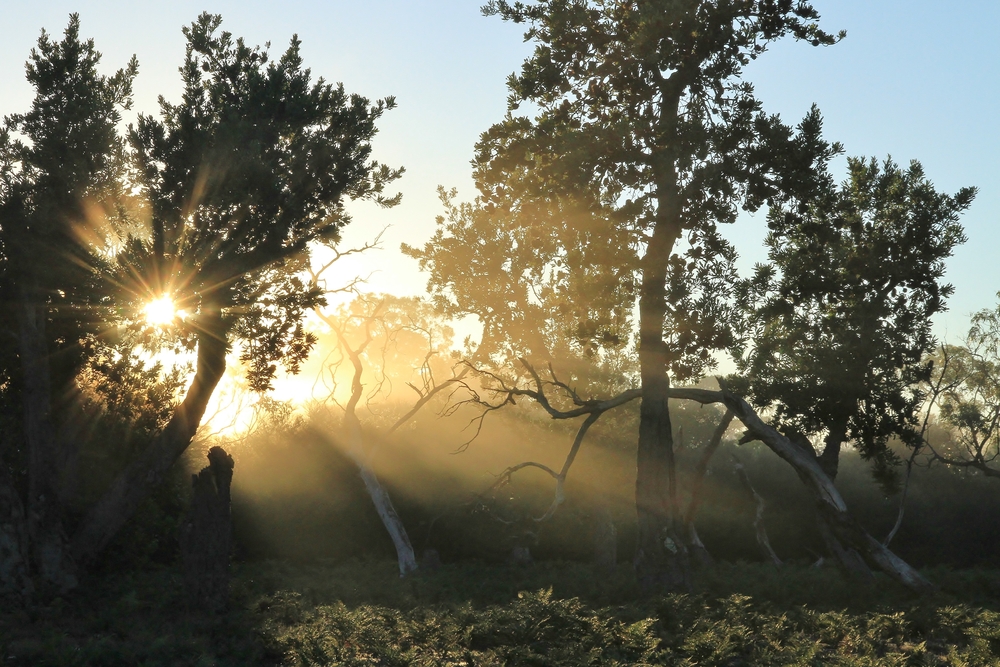
Early morning on the Koala trail on Raymond Island. Photo: Shutterstock
If you want to guarantee a koala sighting, your best bet is Raymond Island. This small island in the Gippsland Lakes sits just 200m off the east Victorian coast. You can board the ferry at Paynesville and take the Koala Trail through the bushland. The walk takes around 20-minutes but we suspect you’ll be stopping to snap photos a lot. There’s a shady picnic spot towards the end so pack a picnic lunch and make the most of your time on the island.
Dingoes,
Fraser Island
In the 80’s, dingoes got a pretty bad wrap, copping the blame in a missing child case at Uluru in the NorthernTerritory. Their reputation hasn’t exactly recovered, but we still hold them in high regard as one of Australia’s most unique animals.
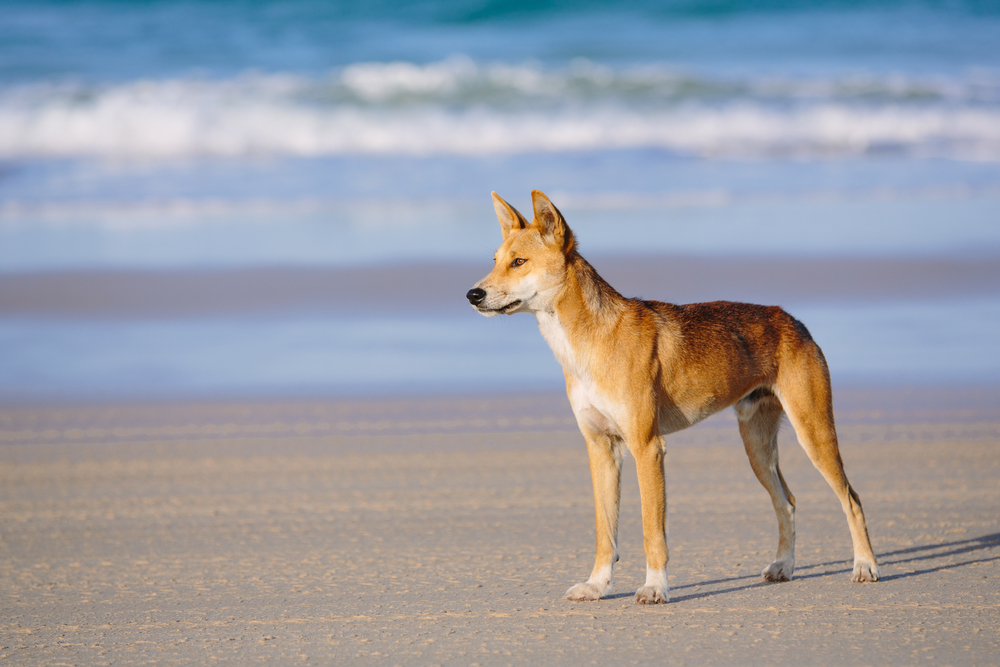
Dingoes are apex predators but do not harm humans unless provoked. Photo: Shutterstock
Adult dingoes grow to around one metre tall and 1.2m long. They have a golden sandy colour and often look very lean due to their level of activity. Some dingoes cover around 40km each day. They may look similar to some domestic dogs, but they certainly don’t act like them. The purest strain of dingoes found in some parts of Australia are very different to those on the mainland as they have not crossbred with other species of feral or domestic dogs. Because of this, they are a protected species despite being considered a ‘pest’ in non-National Park areas.
The largest population of purebred dingoes live on Fraser Island off the Queensland coast. Dingoes are an apex predator, which means they play in important role in balancing the ecosystem on Fraser Island. Sadly, their numbers have dwindled in recent years due to a surge of tourism. Fraser Island is the world’s largest sand island so it’s a popular spot for 4X4 driving, but an influx of increasingly careless drivers has resulted in a high number of vehicle strikes. This is the most common cause of fatality among dingoes.
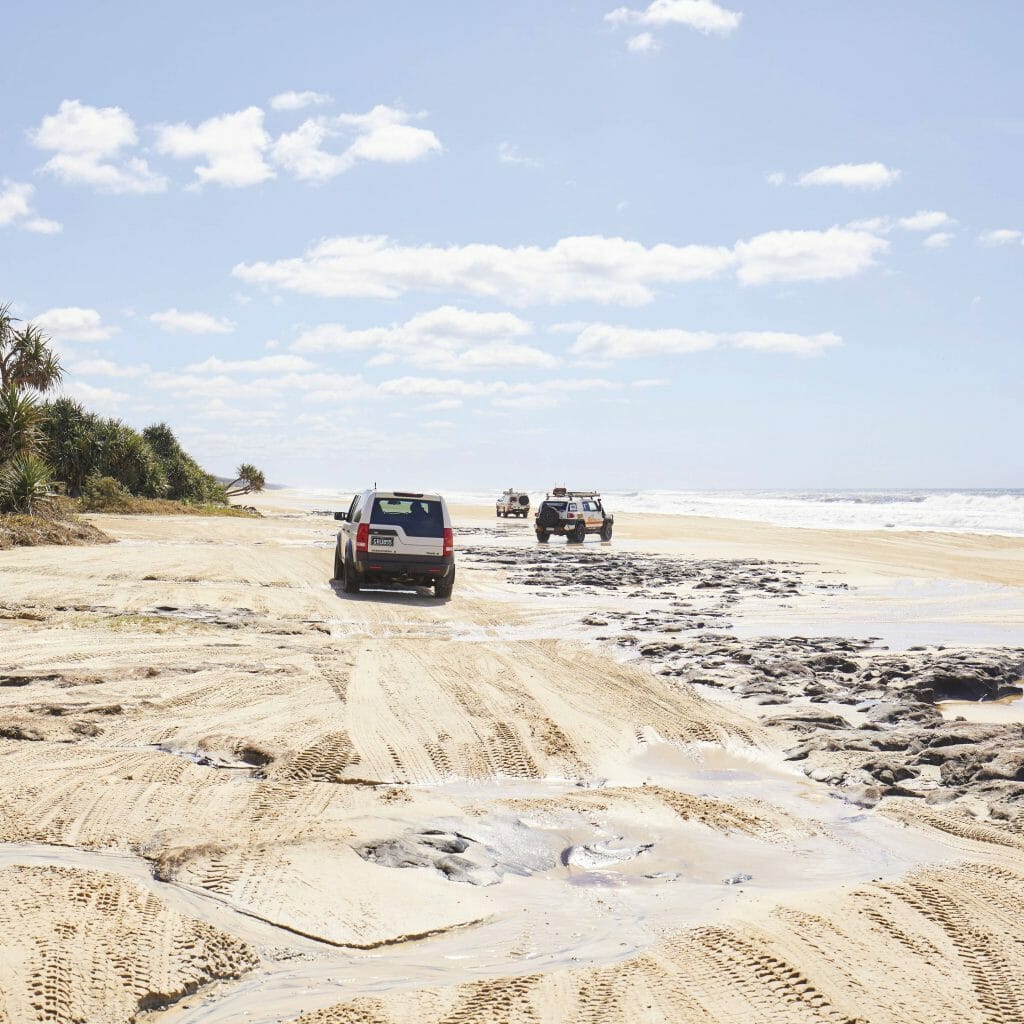
4X4 is a popular activity on Fraser Island, but it can be deadly for dingoes. Photo: Shutterstock
Dingo attacks are extremely rare and usually only occur when the animals are provoked. You will likely spot them on the beaches but it’s best not to go out seeking them. It is illegal to feed or interfere with dingoes on Fraser Island and heavy penalties apply.
You can reach Fraser Island by passenger ferry from Hervey Bay. The trip takes around 50 minutes. If you want to take your 4WD, you can board the barge at Inskip Point or River Heads.
Thinking of staying on Fraser for a few days? These are the top activities for families to try.
Crocodiles
Kakadu, Northern Territory
When you think of a deadly predator, crocodiles are often the first animals that spring to mind, but the fear that most people hold for these creatures is misplaced. Fatal crocodile attacks only occur once every 3 years or so in Australia.
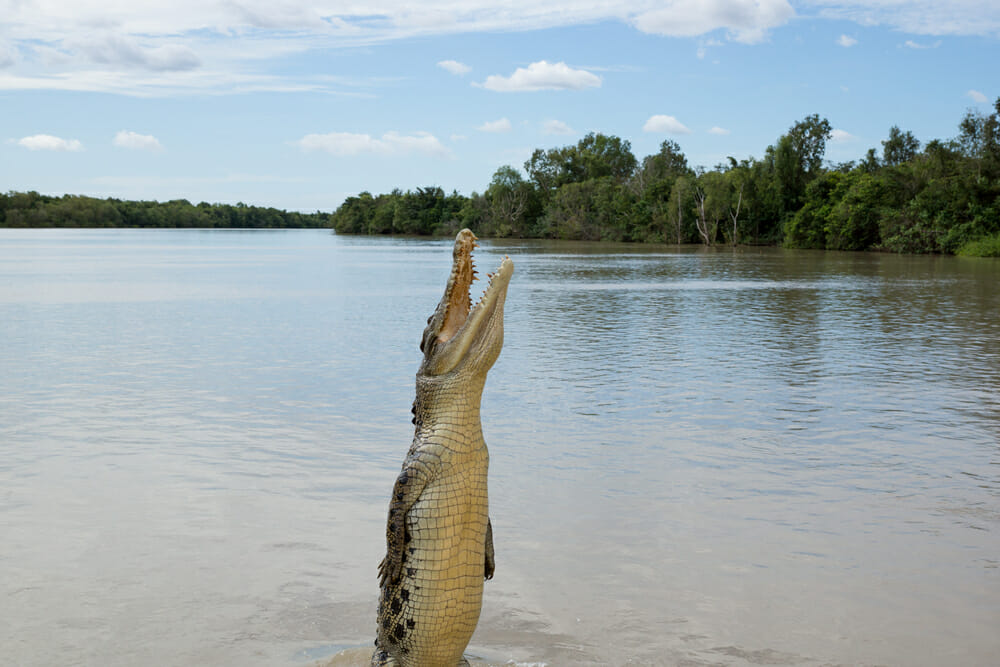
Crocodile jumping out of water in Kakadu, Australia. Picture: Shutterstock
The misunderstood creatures are descendants of dinosaurs and are the largest living reptiles on the planet. In Australia, there are two kinds; freshwater and saltwater. Saltwater crocodiles can do the most damage. They grow to around six metres in length and weigh up to 1,000kgs. Saltwater crocodiles came close to extinction in the early 1970’s due to excessive hunting. However, they soon became a protected species and their numbers have since risen to around 150,000 in the Top End.
Their cousins, freshwater crocodiles, are a much smaller build and far less dangerous. As their name suggests, they thrive in freshwater environments such as rivers, lagoons, billabongs and swamps. Freshwater crocs can be found in the coastal reaches between the south-western Kimberley region in Western Australia and the northern tip of Cape York Peninsula in Queensland.
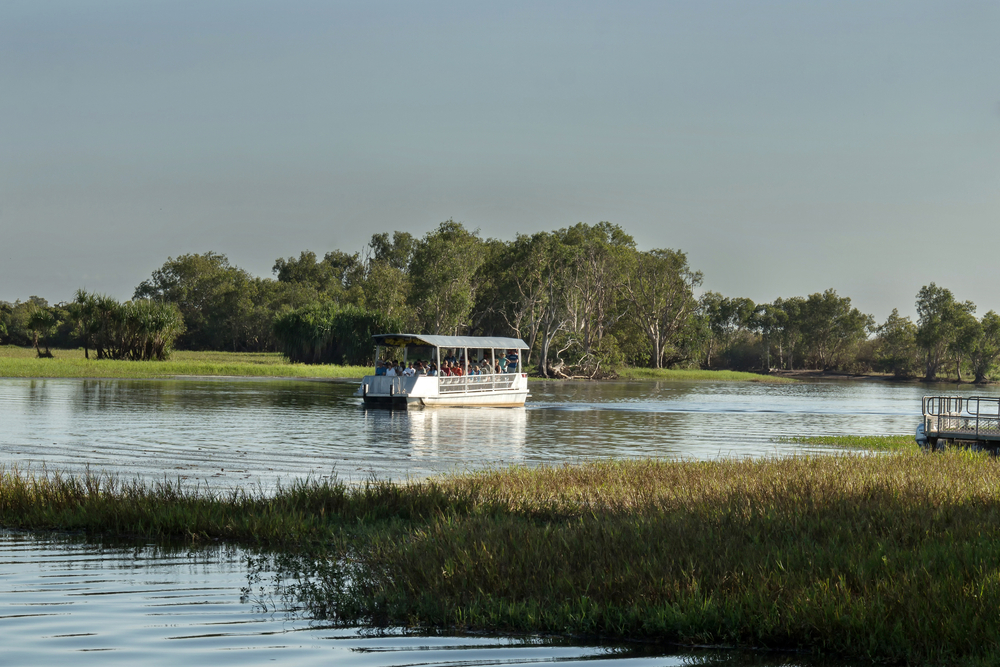
Croc cruise on the Yellow River Wetlands. Photo: Shutterstock
Most people don’t go out looking for crocodiles in the wild. In fact, common sense would tell you to avoid them at all costs. Common sense aside, there are place in the Northern Territory where you can see them under the guidance of a wildlife professional. Most of these croc encounters occur near Kakadu. At Cahills Crossing and Yellow Water, visitors can climb the viewing platforms to look for crocs from afar. For a closer encounter, opt for a croc cruise. Guluyambi Cultural Cruise and Yellow Water Wetlands cruise are the best options for families.
For more croc encounters, check this out.
Tasmanian Devils
Port Arthur, Tasmania
Tasmanian devils were named as such because of their unpleasant screeches and growls. Early European settlers decided on the name after investigating the horrific sounds coming from the bush. This, with their wide jaws and sharp teeth, led the settlers to call “the devil”.
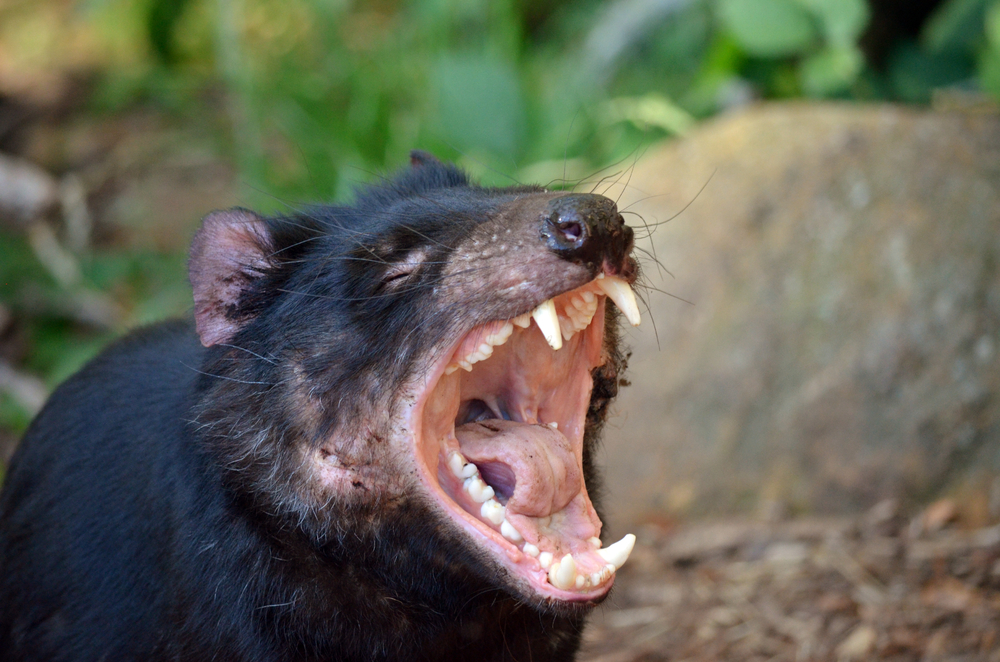
Big yawn or angry snarl? Photo: Shutterstock
These small but mighty marsupials are carnivorous, chomping on wallabies, possums, wombats and birds. Tasmanian Devils are nocturnal so you’re not likely to see them in the wild during the day. They’re also surprisingly good swimmers, sometimes duck diving to recover the food they’ve stored underwater. If that fact surprised you, get a load of this. Tasmanian Devils establish dominance over others by letting off a loud sneeze. Ever sneezed really loudly in a quiet office? This technique works just as effectively among humans as well.
The Tasmanian Devil was officially declared an endangered in 2009. Traditionally, it’s main threats were food scarcity, loss of habitat and road kill incidents, however, a recent epidemic of ‘Devil Facial Tumor Disease’ has seen up to an 80% decline in population.
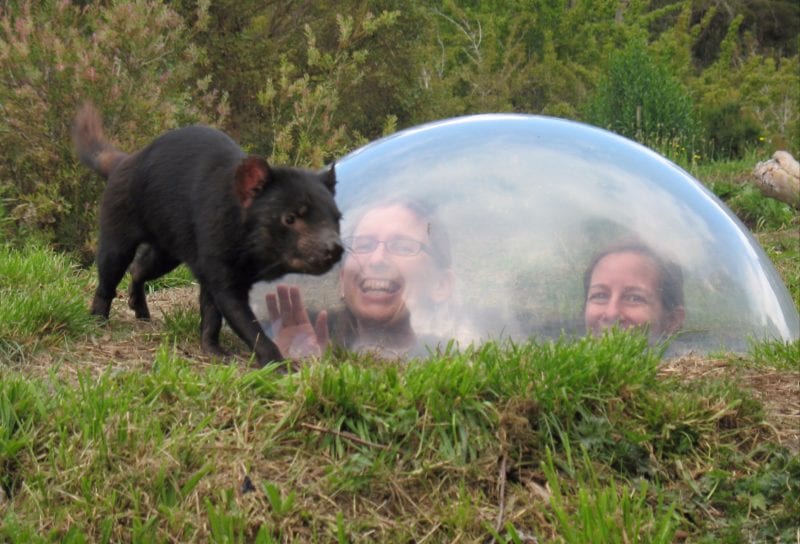
Viewing bubble at Tasmanian devil Unzoo Photo: Tasmanian Devil Unzoo
Tasmanian Devils are so close to extinction that finding them in the wild is like finding a needle in a haystack. Your best bet is to see them at ‘Unzoo’ near Port Arthur. The world’s first attempt to under a zoo has no boundary fences so animals are free to roam around as they like. The underground tunnels have glass viewing bubbles so you can watch the animals, including Tassie devils, wander around above.
Unzoo is located in the town of Taranna, around an hour from Hobart and ten minutes from Port Arthur.
READ MORE
Great NT wildlife adventures for kids
Australia’s favourite celebrity animals
The top nature escapes for families
I was blessed with parents who really saw the value in travel. After our first family trip abroad to Thailand, I became obsessed. I was hungry for anything new and different. I yearned to be in the middle of a city on the other side of the world with a suitcase in one hand and google maps in the other, stumbling around trying to figure out where I was going; literally and spiritually.

